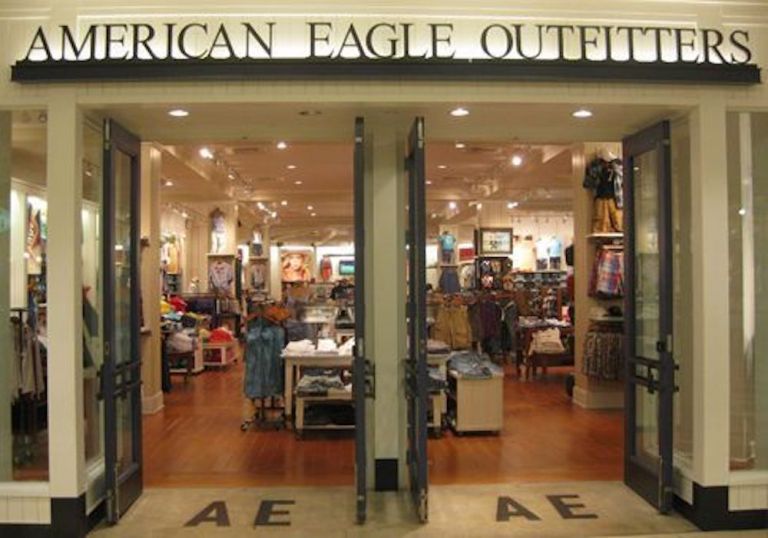
According to the old aphorism, a rising tide lifts all boats. Depending on context, that old chestnut of wisdom can be quite controversial, as is the kind of big-picture thinking it encourages. But, in the narrow context of Q2 and the retail world, it is pretty hard to argue against it.
The tide has been rising in the form of consumer dollars flooding into the marketplace, as a nearly fully employed American workforce has rediscovered its love of shopping. And the boats – the retailers themselves – have been buoyed by the tide. Walmart, Target, Macy’s, Urban Outfitters, Nordstrom – the stores change, but the general drumbeat has been largely the same in retail in 2018. Consumers have been buying more, spending more and visiting stores more often.
And rounding out that list of retailers rising with the tide last week was American Eagle, home of the namesake fashion brand for teens, tweens and young adults, along with Aerie, its lingerie brand. Comparable sales overall were up well ahead of analysts’ predictions of 6.4 percent, clocking in at a solid 9 percent. That growth was largely led by Aerie, which saw its same-store sales increase a whopping 27 percent during Q2. But AE didn’t do so badly either – driven by back-to-school shopping, it clocked 7 percent comparable sales growth. Net income rose to $60.3 million, or 34 cents per share, a notable pick-up from 2017’s $21.2 million. All in, the company’s share price is up 45 percent this year, with 20 percent of that growth logged in the last three months.
And so, as a famous mariner once noted, American Eagle has decided it’s going to need a bigger boat, so to speak.
While retailers nationwide are slicing down their store footprints, American Eagle is building, and in a big way. The company announced last week that it is planning to build and establish 80 new physical Aerie stores over the next three years.
“Aerie is the key growth engine within [American Eagle’s] strategic plan,” CEO Jay Schottenstein noted in an interview.
Schottenstein is not exaggerating. Founded in 2006 and pitched toward 15- to 25-year-old female customers, Aerie has been critical in re-establishing American Eagle’s credibility with its young consumer base in a way that many of its peers were not able to (RIP The Limited) or have struggled to do so as retail trends have changed (Abercrombie).
Aerie has grown into a retail force to be reckoned with on its own, such that it has even started to become a serious threat to the lingerie industry’s ranking titan Victoria’s Secret. For the last several years, VS has been fending off critics of its sexualized advertising campaigns. Data from brand insights firm YouGov revealed that women’s perception of the company has declined since 2013, particularly during the #MeToo era, largely as consumers continue to find its ads increasingly out of step with the times.
As a competitor, Aerie has gone a very different direction. An early forerunner in the body positivity movements, Aerie has built up a fairly loyal following that offers very vocal support of its advertising campaigns – including the #AerieREAL no-airbrushing campaign – which exhibit a wide range of body types and ethnicities. One of this year’s more eye-catching campaigns involved with visible disabilities. That inclusivity-based marketing is planned into the fall of 2018, when men will take the center stage as underwear models (but not with the body type of the typical male underwear model).
Customers have responded positively to these campaigns. Data from Sprout Social finds that both the American Eagle and Aerie brands have won extraordinarily high ratings among consumers on social media. About 83 of social media commentary on AE is positive, while Aerie clocks in with 68 percent positive mentions.
American Eagle didn’t stumble into its solid understanding of its consumers on accident. While other brands have worked hard over the decades to build a certain style or attitude aesthetic, AE has always been a more data-centered player. The retailer has long been in the business of selling to young people, and has spent the last few decades building a data collection engine – through focus groups, customer surveys and in-store observations – to help them understand a demographic more or less defined by change.
Which is not to say the retailer doesn’t still face some very notable challenges. Despite its strong Q2 performance, American Eagle forecasted third-quarter earnings of about 45 cents to 47 cents per share, below analysts’ average estimate of 49 cents per share, which sent its share price sliding.
But the brand says good things are yet to come, particularly as it navigates the growth of Aerie and how to better optimize the retail experience around its inclusivity-themed approach to selling.